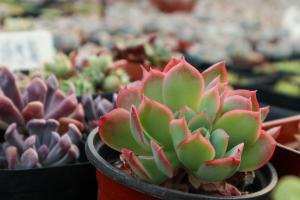1、 Breeding environment
1. The soil of lupin cultivation should be fertile and drainage should be strong. Its root system is relatively developed, very drought resistant and suitable for sandy soil
2. Light: it's best to give it a sunny growth environment. It is slightly shade resistant. It can also grow in a shady environment in a short time. Shade it when the light is strong in summer
3. Temperature: Lupin is not cold resistant. In winter, the temperature should be controlled above 5 ℃. If the temperature is too low, the leaves will be frostbitten, which will affect its normal growth

2、 Breeding method
1. Sowing and reproduction: sowing is generally carried out in autumn. It is best to sow from September to October. 72 holes or 128 holes can be used for on-demand sowing. The soil should be loose and breathable. Give it a germination temperature of 25 ℃ to ensure that the soil is wet, and the seeds will germinate in 7-10 days
2. Cutting propagation: cut 8-10cm branches sprouting in Changchun season, and then insert them into the cold bed. It is hot in summer and may lead to death. It is best to plant them in spring

3、 Common diseases and insect pests
1. Diseases: common diseases of lupin bean mainly include powdery mildew and leaf spot. Powdery mildew mostly occurs in high temperature environment. Even if it is found, the diseased leaves should be removed and sprayed with medicine. Leaf spot can be controlled by spraying carbendazim
2, insect pests: common pests are mainly bug bugs and aphids. They should be killed in time with Omethoate emulsion. p>


 how many times do yo...
how many times do yo... how many planted tre...
how many planted tre... how many pine trees ...
how many pine trees ... how many pecan trees...
how many pecan trees... how many plants comp...
how many plants comp... how many plants can ...
how many plants can ... how many plants and ...
how many plants and ... how many pepper plan...
how many pepper plan...































